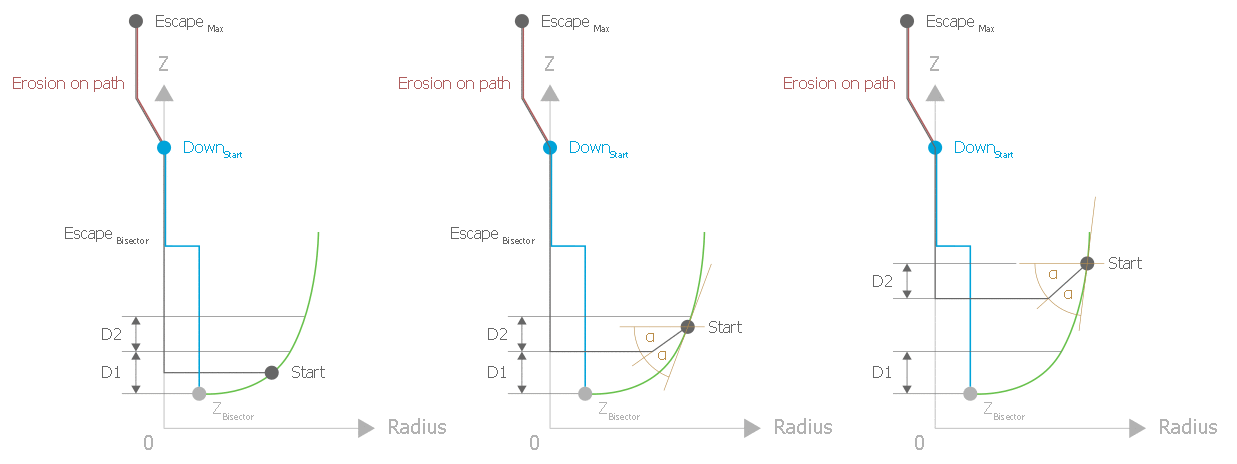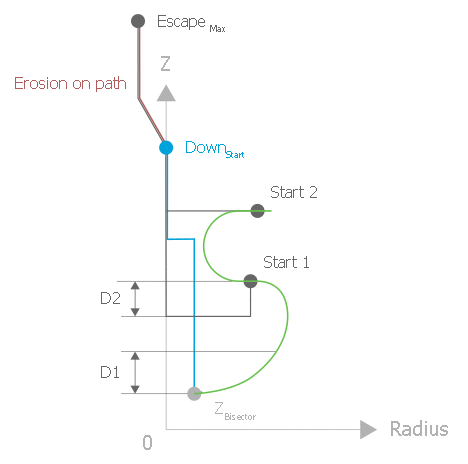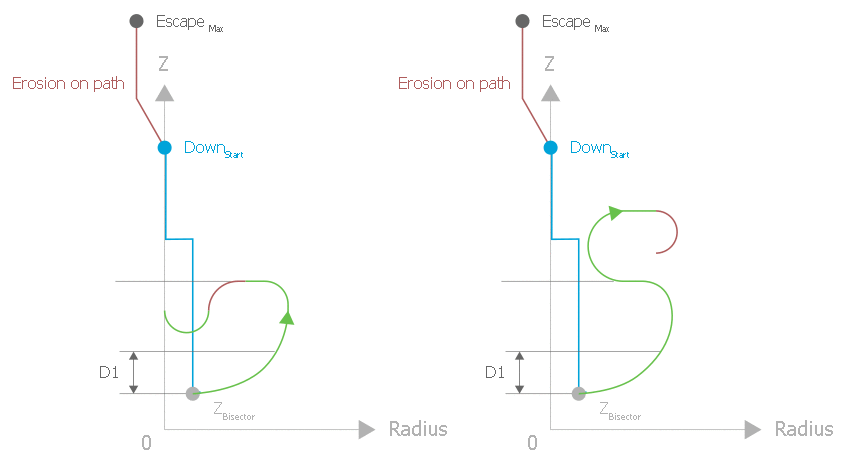Angle bisector strategy
The bisector escape strategy stores the Z height of the activation (ZBisector). In addition, the user requires the two parameters D1≥ 0 and D2≥ 0. The geometric shape of the escape path executed is dependent on the current height in the down channel (Zstart):
- Zstart <= ZBisector + D1
flat escape - ZBisector + D1< Zstart <= ZBisector + D1+ D2
motion in direction of angle bisector up to Z= ZBisector + D1,
followed by a flat escape - ZBisector + D1+ D2< Zstart
motion in direction of angle bisector up to Z= ZBisector – D2,
followed by a flat escape
The ”direction of the angle bisector” is defined as the direction of the angle bisector from the horizontal and the current tangent of the geometry in the down channel. All three variants are shown in the figures below. The horizontal and the current tangent of the geometry in the down channel are shown in brown if they are used in the respective figure to calculate the angle bisector.

As a special case, this strategy results in a horizontal and possibly also a perpendicular motion in the down channel. The escape motion is either identical to the flat motion (‘Start 2’ in the figure below) or perpendicularly downwards. (‘Start 1’) - depending on which direction is closest to the escape motion direction of the previous contour element of the geometry in the down channel.

In the angle bisector escape strategy, a check is made during program runtime to ensure that the angles 0° and 180° between the tangent and the horizontal are not exceeded. This check takes place above height ZBisector + D1. If the angle is exceeded, this would result in a jump to geometry planning and therefore also a position jump with an active escape motion. Error ID 51031 is then output. The geometries shown in the figure below are therefore not possible due to the section marked by a solid red line.

When the angle bisector escape strategy is used, it is important to ensure that the contour in the down channel C1 is continuous as of height ZBisector + D1. Otherwise, position jumps are possible with an active distance in the escape channel and a motion existing in the down channel.
In addition, it is important to pay attention to the feed rate in the down channel when the distance in the escape channel is active, especially if the geometry in the down channel has small radii. In this case, minor position changes in the down channel are magnified by the escape geometry as if by a lever, so that the superimposed position change resulting from the down and escape channels in one cycle may be greater than the permitted velocity value and thus result in an error.
It should also be noted that this escape strategy may possibly intersect the geometry of the down channel during its escape motion and then remove material that the user does not intend. The user must therefore check the geometry in the down channel as well as the selected parameters D1 and D2 for suitability.